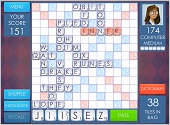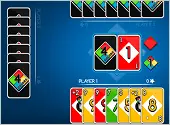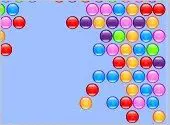- Home
- Better Memory
- Memory Systems
- Best Study Skills
The Best Study Skills - Five Strategies Every Student Should Know
Advice on the best study skills can be found in many books and across the web. However, these sources often gloss over certain memory-related habits that can help you remember the material much better.
On this page I describe five proven study strategies every student should know and use to maximize their retention of the material.
Much of my understanding of the best study skills comes from the book
Your Memory : How It Works and How to Improve It,
by Dr. Kenneth Higbee.
According to Dr. Higbee, the study skills you should be using are:
Dr. Higbee refers to these as "strategies for effective learning". Below I've explained each strategy with examples.
When used consistently, the study techniques Dr. Higbee describes can improve your understanding and memory, regardless of the material. The methods are effective for any level of education or learning environment.
Make these five best study skills part of every study session, and you should be able to recall the information much more easily.
Best Study Skills #1 of 5: Reduce Interference 

One cause of forgetting is "interference". Interference occurs when information you learned previously interferes with (gets in the way of) new material that is similar.
Interference may lead to confusion when the time comes to recall the material. The brain mixes up the new information with closely related details that were learned before.
Here's an example. Suppose you met several people at a business conference last week. Then you met more at a party last night. Interference may cause you to confuse the names of people at the conference with those you met at the party, and vice versa.
Employ these strategies to minimize interference:
1) Overlearn the Material. The better you know the material, the less likely interference will occur. To overlearn, study far beyond the point where you can barely recall the information.
Suppose you want to memorize Lincoln's Gettysburg Address, a famous speech given by U.S. President Abraham Lincoln in 1863. Rather than stopping after you recite the speech just once without mistakes, continue to study and review it further to achieve deeper and more solid mastery.
Research indicates that overlearning strengthens memory for any material, and one of the ways it does this is by reducing potential interference.
2) Make It Meaningful. Another way to reduce interference is to make the information more meaningful. To best remember what you are learning, the material should make sense to you and/or be anchored to what you already know, rather than learned merely by rote. Interference may still occur with meaningful material, but your intellectual connection to it shields you against confusion, so interference will happen less often.
Here are a few powerful ways to make what you are learning more meaningful:
- Familiarity. The more you know of a subject, the easier it is to learn new material related to it. Experienced chess players memorize new moves faster than people not familiar with chess.
The principle of familiarity is one of the benefits of becoming a life-long learner interested in a wide range of subjects. What you learn today gives you a boost when studying related material in the future.
Mnemonics & Visual Images. Convert the information into a mnemonic or visual image, especially a silly or bizarre one, and it will be easier to recall. You may have heard such mnemonic rhymes as, "In fourteen hundred and ninety-two, Columbus sailed the ocean blue," or "I before E, except after C."
Conjure visual images and word associations creatively from the sound of the syllables. Even partial connections establish meaningfulness. The capital of Chile? Santiago (Mental image: Who's hungry for a bowl of chili? Santa is.) The cellular organelle used for storage? Vacuole (Mental image: A giant cell vacuums the store.)
Constructing a mnemonic or a visual image may take a few moments. But it is usually worth it. Working creatively and directly with the material aids memory and establishes familiarity that reduces the potential for interference.
Patterns. In the same way that mnemonics and visual images make information more meaningful, patterns do the same. Look for patterns in any material you want to learn. For example, when learning a list of codes, identify repeating patterns or rules that can help you quickly memorize subsections of the list.
When memorizing phone numbers or other long numbers, break the numbers of into memorable patterns if possible. For example, if you need memorize the number 345376388391, it helps to notice the pattern that every fourth number is a "3", as in 345-376-388-391. Even in the absence of an obvious pattern, chunking long numbers into groups of shorter numbers helps memory and creates familiarity.
3) Minimize Intervening Activity. Interference increases as the amount of activity between study time and the time to recall the material increases. A lot of intervening mental activity increases the likelihood of interference.
If you have an exam coming up, the best way to minimize interference is literally to go to sleep, assuming you have studied sufficiently. While this principle is important, I realize it may not be practical much of the time.
You may need to study multiple subjects one after the other, and there may be other activities in which you need to participate. But it is good to keep in mind nevertheless; use it as you can.
4) Don't Study Similar Subjects Together. Forgetting due to interference will also increase if you try to study similar subjects close together.
Suppose you plan to study biochemistry, organic chemistry, and trigonometry over the next few days. Since biochemistry and organic chemistry are somewhat related, it would be better to study trigonometry between them to lessen potential interference.
5) Study Different Subjects in Different Rooms. Another proven way to reduce interference is to study in different contexts (places, environments) when you have two or more subjects that might interfere with each other.
For example, suppose you are taking courses in both French and Spanish. To prevent confusion between these two similar languages, study French in one room and Spanish in a another room. Even using different colored inks for the two subjects when taking notes can help reduce interference.
When using image-based techniques that employ visualization and association to memorize similar material, create separate mental "rooms" by including a subject-anchor in your images. For instance, integrate the Eiffel Tower into your mental images for French vocabularly and a sombrero into your mental images for Spanish vocabulary.
6) Use Separate Study Sessions. If possible, avoid studying all your subjects together during a compressed time period. Research indicates there is better remembering and less interference if only one subject is learned during a particular study session.
For instance, don't skip around between English, history, and math while you are studying, if you can avoid it. Instead, spend adequate time with one subject, then study the others in separate sessions.
Let's suppose you don't have that luxury. Even if you cannot divide your subjects into completely separate study sessions that day, it can be helpful to at least pause as you switch between subjects. After studying math, leave your desk and take a break before tackling English. Eat a snack or have a drink of water, or take a walk or a nap, to help reset your brain in preparation for the next subject.
Best Study Skills #2 of 5: Space It Out 
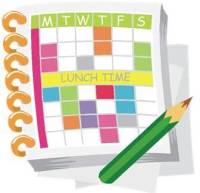
The second of the best study skills recommended by Dr. Higbee is to space out your study sessions for a individual subject or exam. For instance, it would be better to study your math chapter in three distinct one-hour sessions than one marathon three-hour session.
As every student knows, "cramming" is trying to learn all the material for an exam in a single study session. While cramming might get you through the test the next day (or not), research shows it is a poor way to actually learn.
To space out your studying for an exam requires that you budget your time using a calendar. Many students fail to plan ahead in their studying. They pay for this with poorer learning and lower academic performance than what they are capable of achieving.
Want to lower your stress level and gain an advantage on the test? Begin studying days in advance if possible, spreading out your study sessions for that exam over time.
Here are three reasons why spaced learning is more effective than cramming:
The Limits of Attention. Quite simply, there is a limit to how long you can focus on a given set of material. If you try to learn too much at once, your ability to concentrate on the information suffers. Lack of concentration and attention leads to poor recollection of the material.
Consolidation During Breaks. Research suggests that your brain strengthens memories during breaks. When you try to cram everything at once, there are no significant breaks, and less consolidation and strengthening of memories occurs.
Differing Contexts/Moods. Memory is aided by environmental context. In other words, the room where you study, the type of pen or pencil you use when studying, or even your mood can link what you learned during your study sessions with what you are able to recall of the material during testing.
The more distinct study sessions you have in preparation for an exam, the better the odds that your mood, for instance, from one or more of those sessions will match your internal environment at exam time. And this can subconsciously aid memory.
The total study time required when you space out your learning is often less compared to cramming. This may sound counterintuitive, but it's important to understand.
Many students think they "don't have time" to begin studying for the exam in advance. But if your objective is to achieve a high grade and true learning, the reality is that spacing out your studying for that exam can save time compared to last-minute cramming. Knowing this will hopefully motivate you to make the effort to spread out your studying over time.
Length of Study Time. There is a limit to the benefits of spacing as you divide your study time into smaller segments. As an extreme example, separating three hours into 18 ten-minute study sessions is not likely to be useful.
As a rule of thumb, schedule shorter periods for more difficult subjects and longer periods for easier subjects. The more mature and motivated you are as a student, and the more advanced your understanding of the subject, the longer you can probably study per session.
Best Study Skills #3 of 5: Use Whole and Part Learning 

The third of the best study skills is knowing when to break up the material.
If you need to study and remember a long chapter in your history book, should you try to learn everything in the chapter straight through, or study the individual chapter sections carefully one by one?
The best approach is often a combination. Options include:
Whole Method, with Extra Studying for Parts. With this approach, you first use the whole method to obtain a solid grasp of the material. In other words, read straight through everything carefully once or twice. Then separate out the more difficult sections for extra study and reinforcement.
Whole-Part-Whole Method. First go straight through all the material a couple times quickly. Then break up the material into logical parts, and study the parts separately. At the end, go back and review everything from beginning to end. This method is particularly effective for long and difficult material.
Progressive Part Method. With this approach, you break up the material into sections and begin studying the first part. Then you move on to studying the second part, but you study the first part again along with the second part. While studying the third part, you also review the first and second parts.
Continue this way through all the material. This progressive learning approach helps you avoid forgetting the material you learned at the beginning as you go along, and it also helps to organize the material conceptually in your brain. With the progressive part method, it can be easier to remember "the big picture" as you make progress through what you are studying.
The Serial Position Effect. The order of the items in a list can affect how easy it is to learn them. This is known as the serial position effect. "Serial" simply means something in a line.
It turns out that items at the beginning and the end of a list are easiest to remember, while items in the middle are more challenging to recall. Furthermore, the last few items are easier to remember than the first items.
Therefore, when studying a list or other linear grouping of items:
If you are allowed to rearrange: If the items need not be in a certain order, arrange your list so the more complicated, less meaningful items are at the beginning and end of the list. Put the simpler, more meaningful items in the middle.
If you are not allowed to rearrange: If you cannot change the order of the items, spend more time and effort studying the items in the middle.
So the next time you need to learn a list or linear group of facts, such as a list of definitions or material from a lecture, rearrange the information as described above or spend more time studying the middle.
Best Study Skills #4 of 5: Recite It (Self-Test) 

The fourth of the best study skills is recitation. In this context, it means to repeat back to yourself, from memory (without looking), the information you just learned.
This is also known as self-testing. Besides improving your recollection, reciting helps you avoid the illusions of competence trap.
Illusions of competence describes a common scenario where the student believes they've mastered a set of material, although in fact they have not. Thus the "illusion." Watch out for this in your own studies.
Illusions of competence rears its ugly head often: You may be fooling yourself anytime the answer is right in front of you in your notes or on the textbook page. Just because you recognize the information while looking at it does not mean you necessarily know it.
Pause, look away from the material, and recall out loud the facts you just learned. If you cannot recite the details from memory, you likely need to return to the page to study more deeply. If for some reason it is not convenient to recite out loud, write down the information from memory instead.
How to Proceed. When starting your study session, begin by reading through the section headings of the chapter. Then look away and try to recall each of those headings. If you have trouble doing this, consider linking them with visual mnemonics using the image-based Link memory system.
You can later use the headings themselves as a memory aid. After studying the chapter (using recitation/self-testing and the other study skills throughout), recall each chapter heading, and then describe to yourself in detail the contents of that chapter section. If you cannot do so, it's a signal you should spend more time studying that section.
Study Aids. Research supports the use of flash cards as an effective means for creating a strong memory of the material. Paper flash cards are small, blank cards, typically 3 x 5 inches in size (in the U.S.). You can make your own flash cards or use premade sets of cards. Here is an example of a simple vocabulary flash card I made using an index card:
Here is an example of a vocabulary flash card that I made:
 |
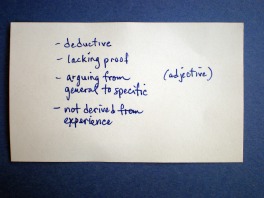 |
I've written the term to remember on the front of the flash card and the definition on the back. Quickly flipping through a stack of flash cards is an excellent method for testing your memory of a large amount of material.
Web or software-based flash card solutions, such as Anki, that utilize spaced repetition are often even more effective than traditional paper flash cards, if employed consistently.
Flash cards can be made for many types of subject matter. Other common examples include math flash cards to memorize basic math facts, and sight words flash cards to memorize how to spell basic English language vocabulary.
Use a Study Partner. Another useful recitation strategy is to find a partner among your classmates and quiz each other on the material. This is most effective when each partner has already completed significant studying. Not only should each person ask the other to recall simple facts from the reading; it can also be helpful for partners to devise questions based on the material for the other to answer.
The Power of Reciting/Self-Testing. Recitation is one of the most effective study skills, if not the most powerful. Reciting activates important modalities to aid memory:
Active Learning. Recitation is active learning (as opposed to passive), which engages more than one of your senses.
Feedback. Recitation provides feedback that identifies which details you need to spend additional time studying.
Concentration. Knowing you will have to recite from memory forces you to focus deeply and pay very close attention to the material.
Furthermore, reciting is excellent practice for the exam. Think about it; for most subjects, recitation is exactly what you do much of the time while being tested.
During the exam, you must recall the material as accurately as possible from memory. Doesn't it make perfect sense to practice during your study sessions precisely what you are expected to do on the test?
Spend as much time reciting as possible. Rather than re-reading the chapter over and over, recite the facts in the chapter from memory until you know them very well. |
Best Study Skills #5 of 5: Use a Study System 

The fifth recommended study skill is to use a "study system." A study system refers to any standard method of learning material.
Many such systems and variations exist. You may want to delve into this further to identify the system that works best for you. One of the oldest and best-known is referred to as "SQ3R" which I describe here.
SQ3R is an acronym (S-Q-3R, or S-Q-R-R-R) that represents the five steps in the system. These steps are Survey, Question, Read, Recite, and Review. And that is the order in which you complete the steps when studying.
Here is how to perform each step of the SQ3R study method:
Survey. This is similar to the concept of "whole learning" discussed on above. However, instead of trying to learn the material in detail as you read through it, your objective when surveying is to grasp the essential framework only.
To survey the material, examine the structural parts quickly, without digging too deep. Try to form a mental outline on which you can later hang the details.
Read the preface, table of contents, and the chapter summaries. Read all the main headings and subheadings within the chapters. Carefully examine all graphs and pictures, and read the captions. When surveying you want to study everything except the actual meat of the material.
Question. Now proceed again through what you just surveyed. This time pose a number of questions to yourself about each topic and section. For a math chapter that covers the quadratic formula, you might ask, "What is the quadratic formula, and why is it important?", "Why is it called 'quadratic'?", or "How is this formula useful in real life?", for example. Flip section headings around into questions.
Do not attempt to answer the questions yet. (Answer them during Step 3 below.) Thinking up questions focuses your mind on the subject and helps you engage. The deliberate act of posing your own questions forces you to interact with the content. This lays the groundwork for reading, studying, and memorizing the details later.
Read. After surveying the framework of the material and then posing questions, next it is time to read the paragraphs and other detailed sections carefully. Many students jump to this step without first surveying and questioning, which makes it more difficult for the material to be sorted into their memory in an orderly way.
On your first pass, read straight through without taking notes or trying to memorize anything. Make sure to read the graphs, chapter summaries, and so on again as well. You can try speed reading techniques, including skimming, especially during this first pass through the material, to save time and increase comprehension.
Avoid underlining/highlighting initially. On first reading it is difficult to judge what is most important to remember. Underlining and highlighting should only ever be done selectively. Physically marking up the page risks the illusions of competence trap; seeing all those highlights tempts you to assume you "know" that material.
On subsequent passes through the material, work actively with the information. Answer the questions you posed during Step 2 above. In addition to using the four study skills described above (reduce interference, space it out, use whole and part learning, recite it/self-test), employ other study techniques and memory aids.
Examples: Take notes; write flashcards; make lists and outlines; mark up the text selectively (if allowed) with asterisks, arrows, boxes, underlining, and other ways to highlight key points; conjure mnemonic rhymes, word associations, and visual mental images; look up unfamilar terminology; make sketches and drawings; create charts; memorize formulas; solve practice problems; and so on.
BONUS TIP: You may want to read out loud the hard parts you want to remember. According to research, verbalizing becomes a powerful memory aid if you read aloud not the entire passage but just the specific information to be memorized.
Neuroscientists suggest that speaking the words aloud creates a "distinctive encoding record" in long-term memory. Reading those details out loud to someone else boosts retention even further.
Recite. As explained above, to recite or self-test means challenging yourself to recall the details from memory without looking at your notes or textbook.
Experts recommend spending at least half of your study time reciting. This includes reciting/self-testing as you go through the chapter learning individual facts, and later with chapter-wide recitation.
Once you have a solid grasp of the material in the chapter, go through the chapter page by page to each heading and subheading. Recall as many details as you can from the body of each section. Reciting section by section through the chapter will provide an accurate assessment of how well you know the overall material.
Review. By this point you should have established a solid grasp of the material. The review consists of multiple iterations (loops, repetitions) of reciting/self-testing. This solidifies understanding and memory and helps establish the overlearning that is such valuable protection against interference and forgetting.
The more times you review the information before your exam, spaced out over hours or days if possible, the better you will likely remember the material and perform on the test.
Never end a reading session without reviewing the main points of what you have just read. This is one of the most important tips for remembering any material.These concepts apply equally to handwritten notes that you take during lectures, not only to textbook material. Use the same SQ3R steps when studying and reviewing your notes. You might first need to recopy and clean up your notes if they are messy.
Best of Luck in Your Studies
There are other study skills and methods, but the essential five presented in Dr. Kenneth Higbee's book, Your Memory: How It Works and How to Improve It, and described and expanded on the page above...
Reduce Interference
Space It Out
Use Whole and Part Learning
Recite It/Self-Test
Use a Study System
...are some of the most effective you will ever come across. As your next learning challenge going forward, I suggest you memorize the list above!
All learners, regardless of educational environment (school, work, or self-study) should be encouraged to master these five best study skills. The rewards to the student for making this effort include more efficient learning, improved academic performance, and ultimately a stronger foundation of knowledge.
Study hard and good luck.
Published: 05/19/2010
Last Updated: 03/22/2020
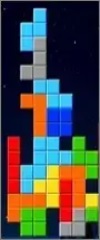
New / Popular
Multiplayer
Board Games
Card & Tile
Concentration
Math / Memory
Puzzles A-M
Puzzles N-Z
Time Mgmt
Word Games
- Retro Flash -
No sign-up or log-in needed. Just go to a game page and start playing! ![]()
100 Free Puzzle Printables:
Sudoku / Word Search

